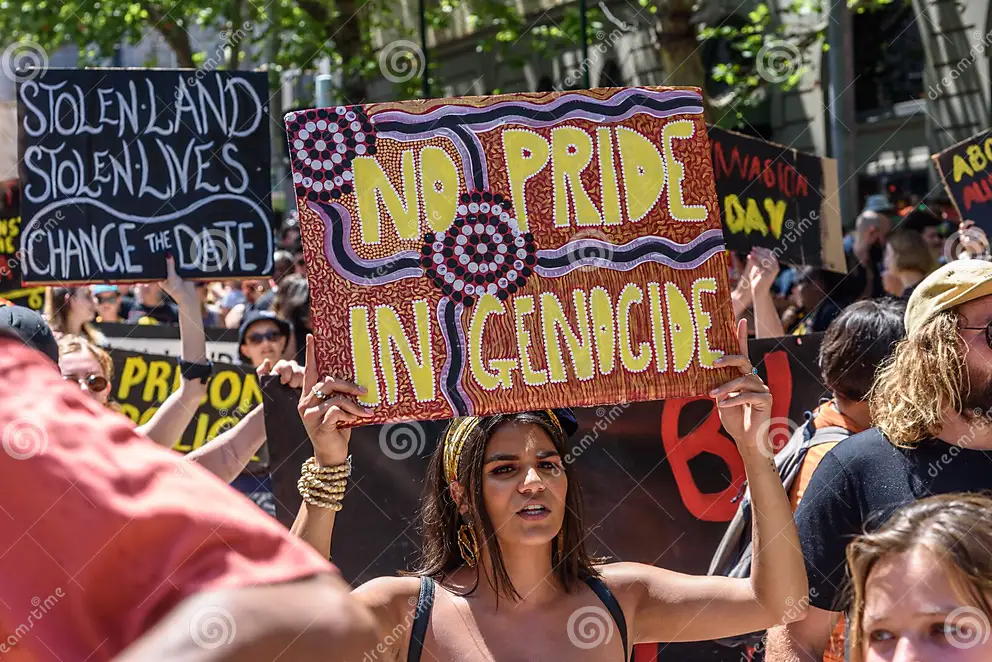
A Closer Look at Power Dynamics
The “Aboriginal Industry” has become a domain populated by ill-informed urban myth-makers and charlatans, promoting an exaggerated and sometimes fabricated version of Aboriginal culture. This includes claims about indigenous knowledge spanning agriculture, water management, fire practices, art, fashion, astronomy, and ceremonial rituals like the “Welcome to Country.” This misrepresentation seeks to convince contemporary Australians of a romanticized view of the past, one that does not align with historical reality.
Moreover, authentic accounts of early Aboriginal life and culture have been sidelined, replaced by narratives focused on “invasion, colonization, and inter-generational trauma.” It is increasingly rare to find history books about Aborigines in educational institutions that are more than fifteen years old, leading to a concerning trend of cultural censorship and erasure.
The recent emphasis on the so-called “frontier wars” perpetuates this distortion of history, serving as a convenient replacement narrative intended to elevate the status of Aboriginal people while vilifying settlers. This revisionist approach seeks to depict Australia’s history as inherently genocidal and racist, a notion that is both misleading and divisive.
The concept of “self-determination” for many who identify as Aboriginal often translates to a disregard for societal norms, such as keeping children in school and abstaining from clan and domestic violence. This is especially noticeable on the turbulent streets of Alice Springs, where “self-determination” is sometimes interpreted as “we’ll do as we please, and you’ll bear the cost.”
In this context, “self-determination” has become a tool for colonizing and taking control, often without reciprocal contributions to white institutions, judiciaries, organizations, and bureaucracies. Some individuals, with minimal indigenous heritage, now exclusively identify as Aboriginal, leveraging this identity for economic and social advantages. This is driven by a select group of activists whose ultimate goal is to establish a hierarchy where one race enjoys a preeminent position over all others.
The proliferation of bans on activities like climbing Uluru, Mt. Warning, Mt. Gillen, and many Grampians climbs, purportedly due to “cultural” reasons, has led to accusations of rent-seeking. Even in the case of Mt. Warning, reopening the climb is being considered, but only for those willing to pay a fee and be escorted by indigenous guides, further fuelling these allegations.
Australian place names are also undergoing rapid changes, with Aboriginal names replacing existing ones, often with uncertain authenticity. These alterations, presented as claims to ownership and sovereignty, are not genuine expressions of respect for Aboriginal culture but rather subtle attempts at cultural takeover.
The push for an Aboriginal “Voice” is not about “closing the gap” or giving Aborigines a say; it can be achieved without altering the Constitution. Rather, it represents a broader drive toward Aboriginal sovereignty, necessitating a change to the nation’s foundational document. This move, if successful, threatens to divide Australia along racial lines.
What remains hidden in plain sight is the government’s intention to fund and promote the “Yes” campaign while stifling dissent from the “No” side by labelling it as “misinformation.” This tactic has already been witnessed in attacks on individuals like Jacinta Price. Additionally, the taxpayer-funded ABC and SBS contribute to a daily barrage of pro-“Yes” propaganda.
In conclusion, remote Aboriginal Australians find themselves unwitting pawns in a power struggle within the white majority. The “Voice” initiative is just the latest effort by the left-bureaucratic class to exert more control and further their agendas, potentially at the expense of broader societal harmony.



